2025 Toyota Camry First Drive Review: The Best ‘Boring’ Car Keeps Getting Better
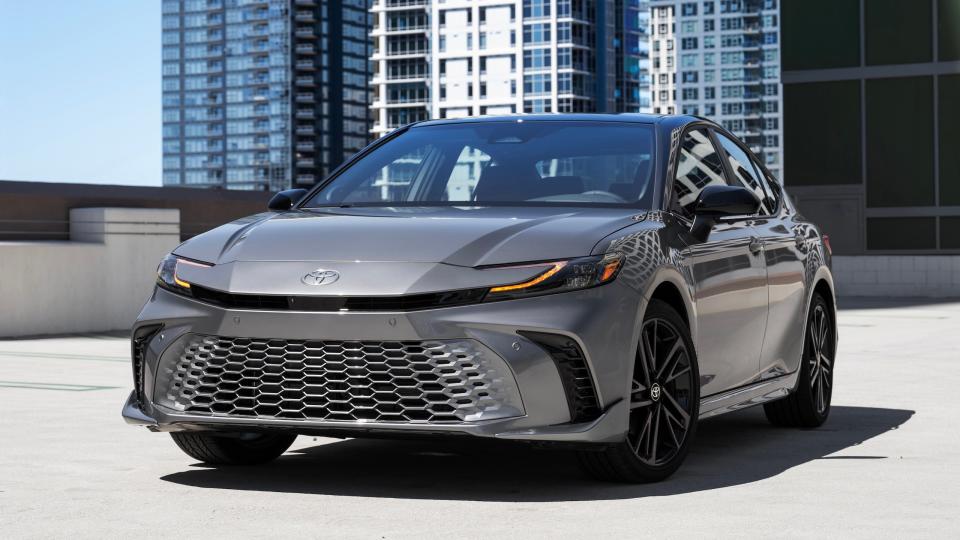
If someone were to make a video game about boring cars, the Toyota Camry would be the final boss. For over 40 years, the Camry has been a staple among those who just want An Car and the 2025 Toyota Camry isn’t trying to change that. It’s not a sports car, a luxury car, nor a mom or dad car—that honor is reserved for minivans and crossovers. The prefix that best applies to the Camry is “normal” if you prefer to be nice, or “boring” if you want to be, well, less nice.
But the Camry is also one of the best-selling cars in its segment, and it was one of the last sedans to outsell SUVs and pickups before truck fever struck in the U.S. When someone just wants a normal car for normal things, like commuting to work or shuttling a family around, the Camry is a good go-to. That’s still true today, and now that the 2025 Camry is hybrid-only and delivers a more refined driving experience, maybe it’s time to drop the “boring” prefix altogether. The new Camry is simply a good car, maybe even a fun one.
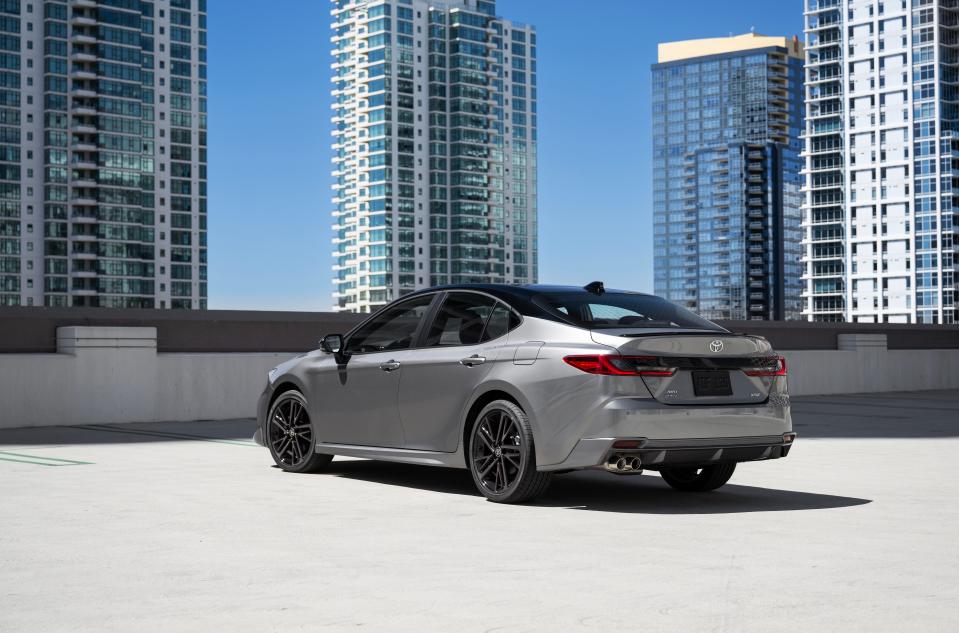
The outgoing Camry was split into different lineups depending on drivetrain. There was the 2024 Toyota Camry and the 2024 Toyota Camry Hybrid. That gas-only model came with either a 301-horsepower V6 or a 2.5-liter four-cylinder while the Hybrid took the latter and added an electric motor.
Starting at $34,495, this new 2025 Camry drops the Hybrid suffix because, well, they’re all hybrids. Now, the only available drivetrain is a 2.5-liter four-cylinder engine paired to an electric motor that makes a total of 225 hp on front-wheel-drive models. Output increases to 232 hp for all-wheel-drive cars courtesy of an electric motor in the rear axle, which provides on-demand power when more traction is required. AWD is available on all trims for an extra $1,525, even the base model.



And, yes, speed racers, the V6 is gone and so is the TRD trim. But, again, the Camry is not a sports car and was never meant to be one. What the ninth-gen Toyota Camry is, though, is redesigned. Underneath the new sheet metal, however, the latest Camry rides on the same TNGA-K platform as its predecessor. You can see traces of the old model in this new one, but the front end has changed quite a bit, sporting the “hammerhead” fascia of the new Prius and Crown Signia.
This shared design language has grafted well onto the “boring” Camry, and it now looks slightly more athletic while still resembling the previous generation. It’s a good balance of old and new that sticks to the overall vibe of the car, which is conservative yet forward-thinking. A good old-fashioned sedan with a pioneering streak.





The interior follows this design ethos, looking vaguely similar to the previous model while taking a big leap forward. There’s still a kind of stepped center console that favors the driver, and the dashboard is now segmented in a more dramatic way. The transition looks really cool, though, with matching trim on the door cards and dash that gives the cabin a sense of flow. Upper and lower Camry grades are differentiated by the materials adorning the dash, so an XSE might have leather-like material while another grade will feature a cloth-like covering. Both look and feel great.
Front and center is a big infotainment screen that measures 8 inches diagonally as standard, but there’s an upgraded 12.3-inch screen available. All Camry grades get wireless Apple CarPlay and Android Auto, as well as two USB-C ports and at least one USB-A for front passengers. The inductive charging pad looked too smooth to be useful, so I opted not to use it. Last thing I want is an iPhone flying off the console. I’m a hardwired hold-out, so I always plug straight in, but I get why people love wireless… everything.
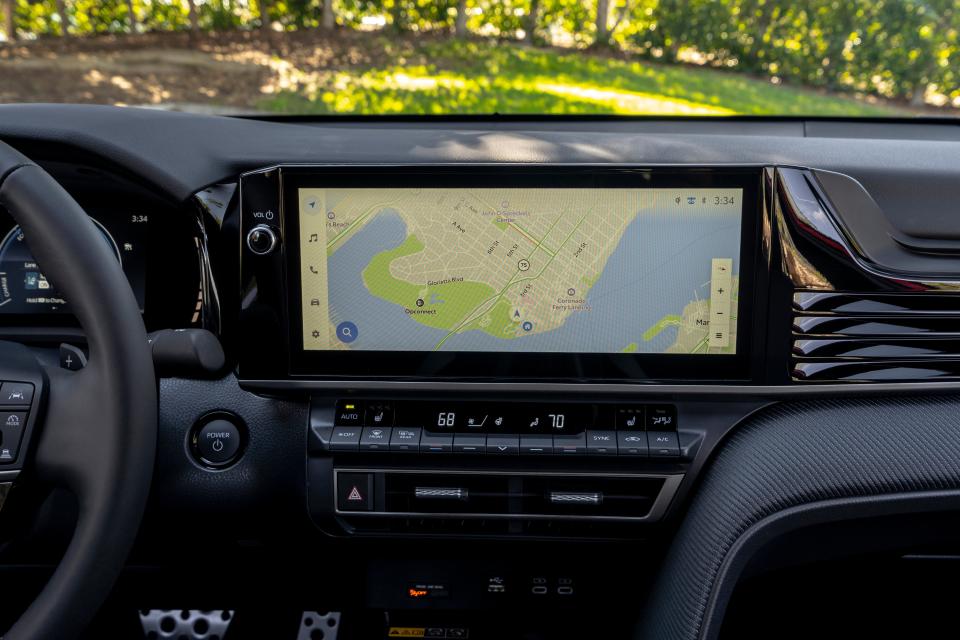
One of the most welcome changes is the addition of a teal paint finish, which Toyota calls Ocean Gem. Even the Camry’s chief engineer, Mark DeJongh, remarked that the Camry team was surprised when they saw the paint on a finished car. The lively teal pops off the sheet metal in ways that the paint swatch couldn’t capture.
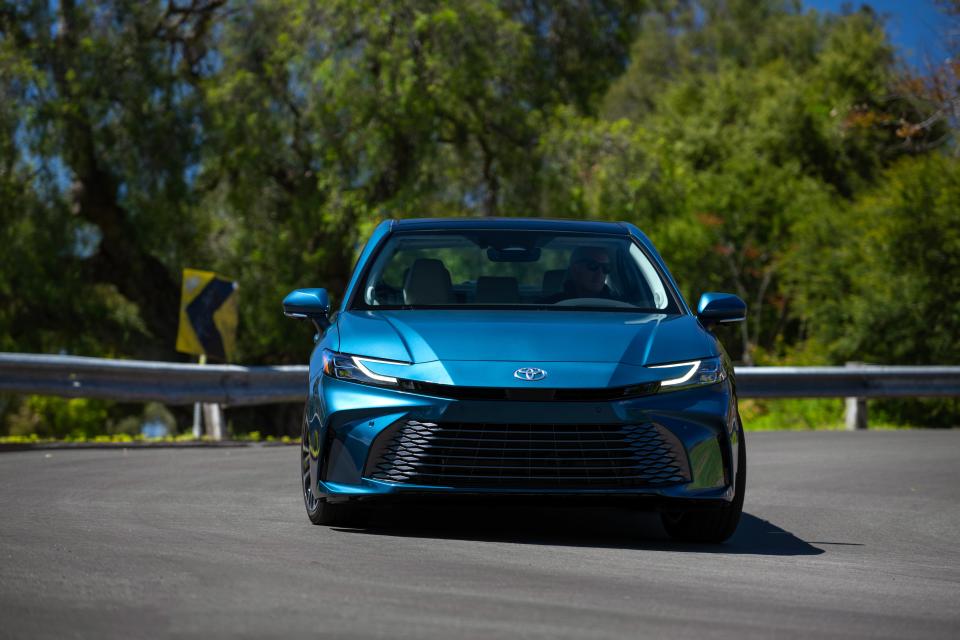
Indeed, the new color looks friendly and bright in a late-’90s, early-’00s kind of way. As a millennial, I’m fully onboard—especially when Ocean Gem is coupled with the Camry’s standard 16-inch and available 18-inch wheels. Upper trims get optional 19-inch wheels but sidewall is king for both looks and performance, if you ask me.
I mentioned before that a Camry TRD will not be available at launch. I’ll let you make up your own mind about that, but I never understood the appeal of a “sports” Camry. The Camry always struck me as an honest and self-possessed car. There was no pretense, no feigned personality.
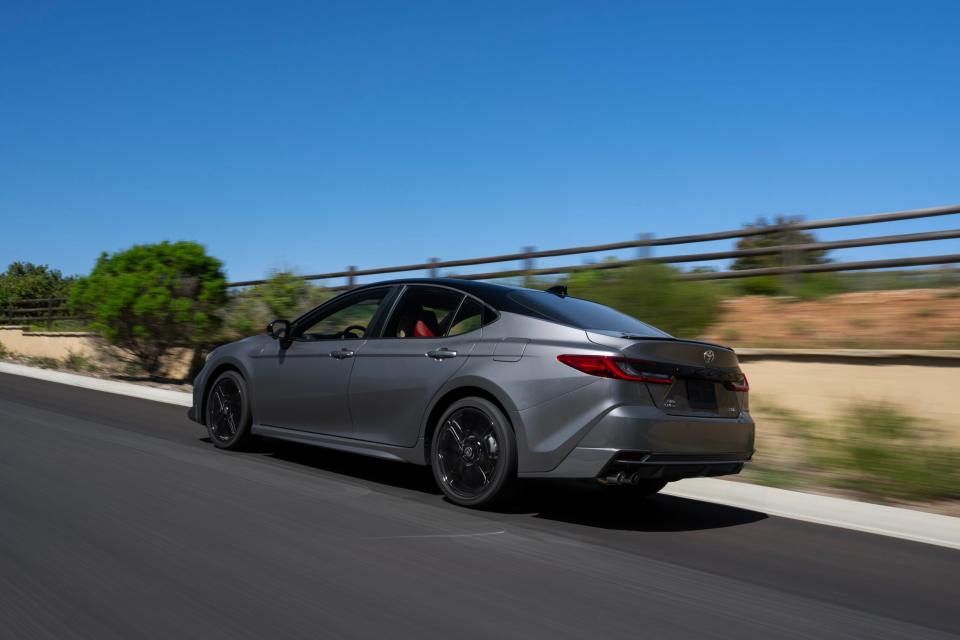
That honesty is abundant in the new hybrid model, which handles exceptionally well in its natural habitat of both the city and highway. I drove the Camry around Coronado, California, which connects to San Diego via a long causeway. Heading east along State Route 94, the Camry showed off what it can do on a twisty mountain road in both FWD and AWD spec. I was surprised to learn that the new Camry is pretty fun to drive.
It will never sound the same as the dearly departed V6, but the hybrid has pep! Acceleration is boosted by electric motors while the electronically-controlled CVT handles simulated gear shifts seamlessly, making power feel linear and smooth. Toyota says the new model with electronic motor-fed AWD makes 30 hp over the previous car that featured mechanical all-wheel drive. That seems like a misdirect to gloss over the big power drop from the missing V6, but, in practice, the new car is plenty responsive.
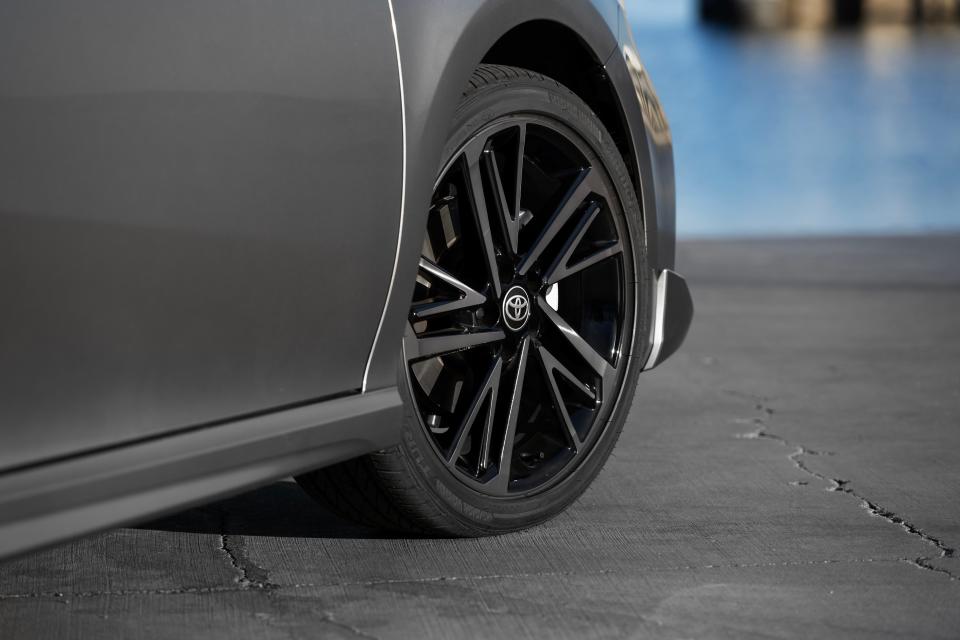
My major gripe is that the steering feels too heavily weighted. It’s not like the Camry is hard to steer, but the wheel seems more resistant than necessary in a family car like this. It ends up stiffening the feel, which is fine at speed but less welcome when maneuvering around parking lots at, say, the grocery store, or while getting in and out of the suburbs.
Then again, the combination of slightly heavier steering with the Camry’s reworked suspension and new drivetrain add up to great highway performance. The drive is planted and the Camry offers a smooth ride, but it’s not so compliant that it feels lifeless. This is a sedan that communicates well through sound and steering feel and is overall just firm enough.
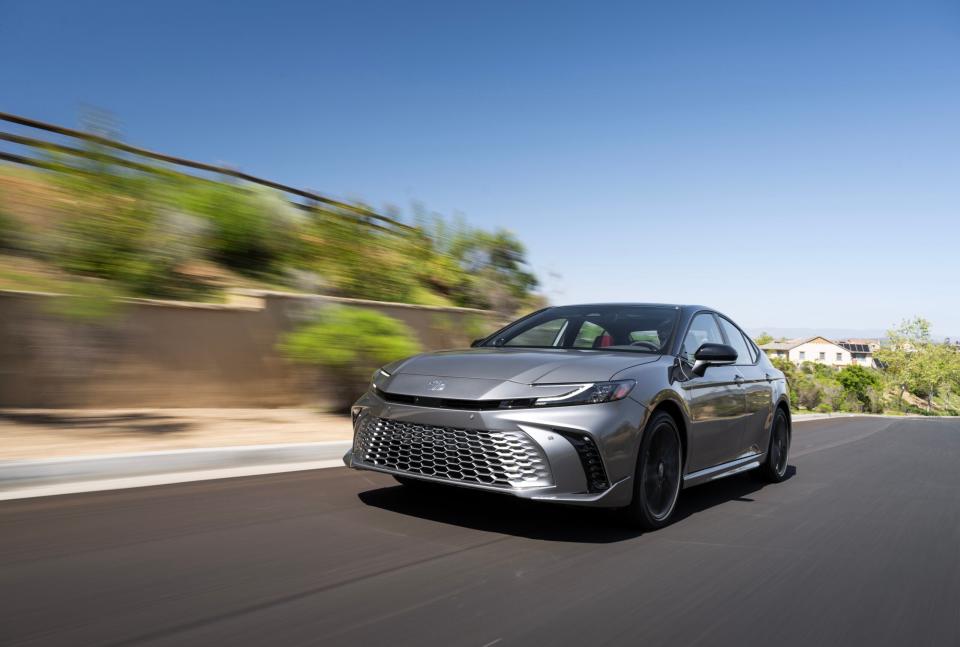
There are MacPherson struts up front and a multi-link rear featuring new “sport-tuned” shock absorbers. The suspension is tuned a little stiffer than you’d expect in a family car, but it’s not trying to be raw or visceral. In other words, it’s more of a sporty sedan than sports sedan. And that’s great because this is a Camry, after all. It’s a car that has always known what it does and is perfectly happy just doing it well.
That’s why I’m a fan of the move to a hybrid drivetrain across all trims. It simplifies the lineup and splits the difference between fuel efficiency and performance. A base model Camry LE will get a whopping 53 mpg on the highway and 50 in the city. Modern cars should’ve always been circling this many mpg, and it’s great to see a stalwart sedan like Camry lead the pack in terms of fuel economy.
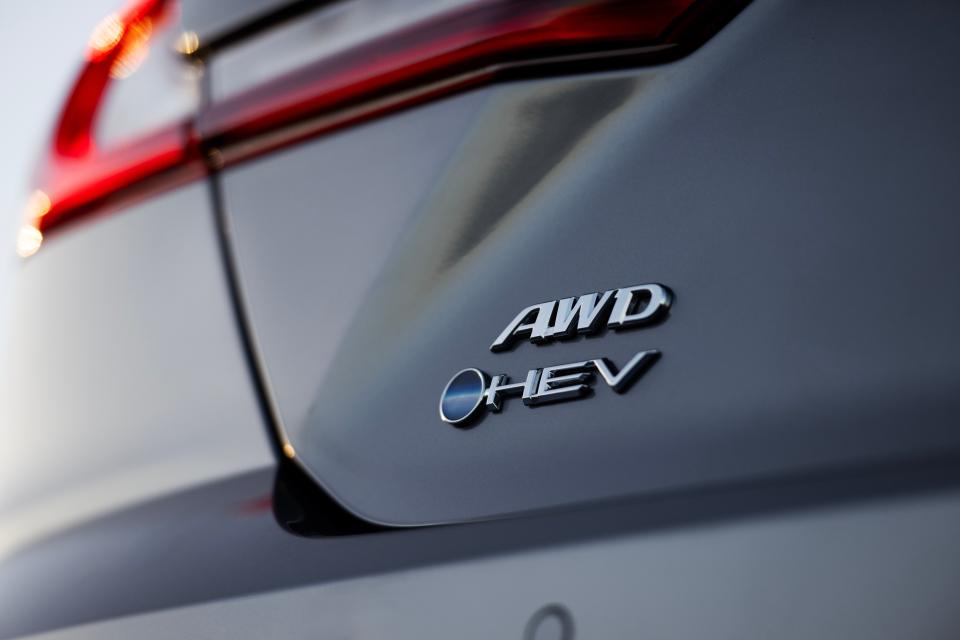
Given the impressive balance this midsize sedan strikes between enjoyable driving and efficiency, the “boring” old Camry has caught up to competitors like the Honda Accord, Kia K5, and Hyundai Sonata, all of which tout strong hybrid offerings. The downside is that the new Camry’s price starts a couple of thousand dollars higher than it did when a simple combustion engine was in the base model. The trade-off, however, is clearly compelling.
2025 Toyota Camry Specs | |
|---|---|
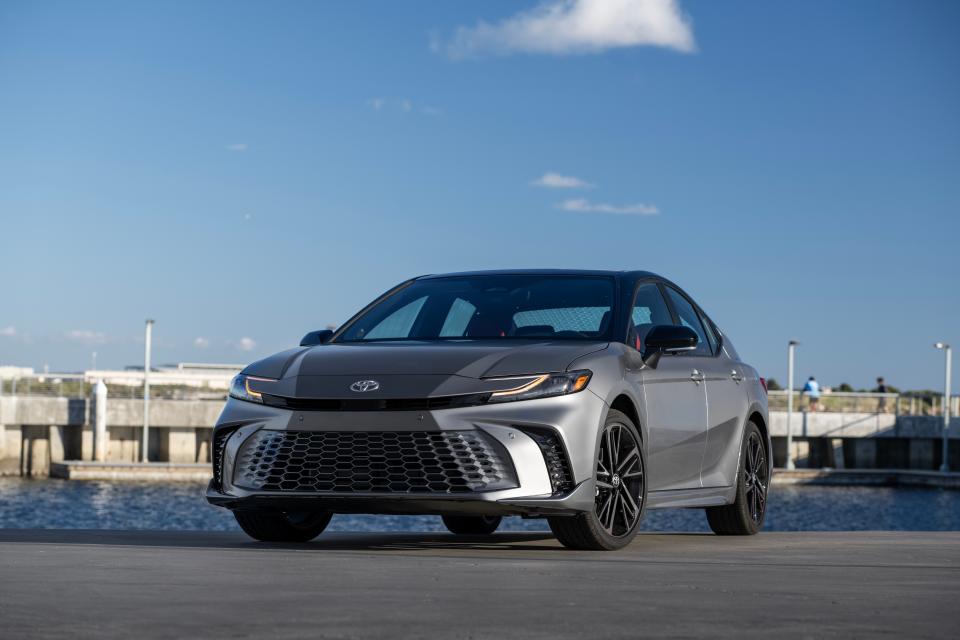

 Yahoo Autos
Yahoo Autos 